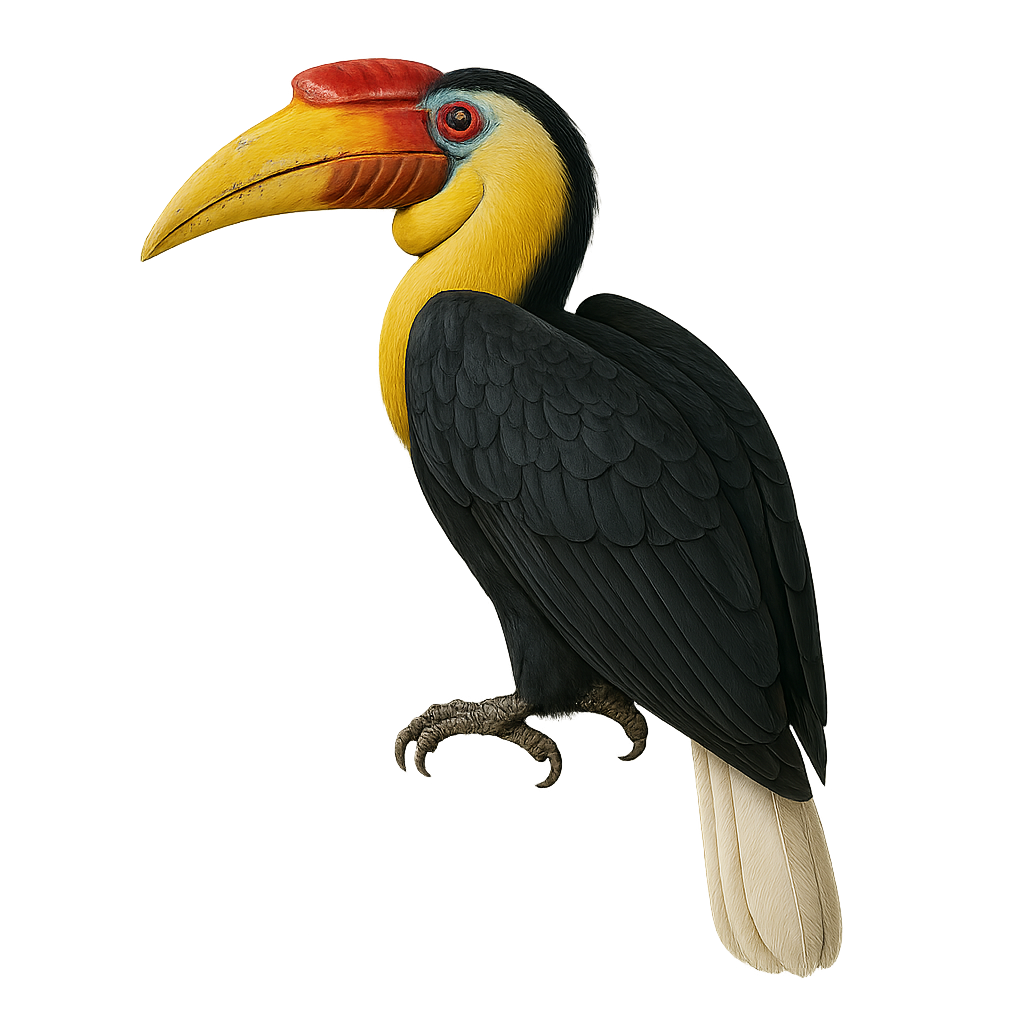Your wildlife photography guide.
Explore the wrinkled hornbill in detail, study its behavior, prepare your shots.
Where to observe and photograph the wrinkled hornbill in the wild
Learn where and when to spot the wrinkled hornbill in the wild, how to identify the species based on distinctive features, and what natural environments it inhabits. The WildlifePhotographer app offers tailored photography tips that reflect the wrinkled hornbill’s behavior, helping you capture better wildlife images. Explore the full species profile for key information including description, habitat, active periods, and approach techniques.
Wrinkled Hornbill
Scientific name: Rhabdotorrhinus corrugatus

IUCN Status: Vulnerable
Family: BUCEROTIDAE
Group: Birds
Sensitivity to human approach: Suspicious
Minimum approach distance: 10 m
Courtship display: February to April
Incubation: 28-30 jours
Hatchings: March to May
Habitat:
Tropical forests, rainforests, mangroves
Activity period :
Primarily active during the day, with peak activity in the morning and late afternoon.
Identification and description:
The Wrinkled Hornbill, Rhabdotorrhinus corrugatus, is a striking bird known for its glossy black plumage and distinctive casque, often reddish-orange. This casque, an extension of the upper beak, plays a crucial role in communication and courtship. Males and females can be distinguished by eye color, with males having red eyes and females white. They primarily inhabit the tropical forests of Southeast Asia, feeding on fruits, insects, and occasionally small animals. Their social behavior is fascinating, as they form monogamous pairs and are known for their cooperative breeding. Unfortunately, their habitat is threatened by deforestation.
Recommended lens:
400mm – adjust based on distance, desired framing (portrait or habitat), and approach conditions.
Photography tips:
To photograph the Wrinkled Hornbill, it is advisable to use a telephoto lens of at least 400mm to capture detailed images without disturbing the bird. Look for areas of the forest where they are active, usually early in the morning or late afternoon. Be patient and quiet to avoid scaring them away. Use a tripod to stabilize your camera and adjust your settings for low light conditions under the dense canopy.
The WildlifePhotographer App is coming soon!
Be the first to explore the best nature spots, track rutting seasons, log your observations, and observe more wildlife.
Already 1 432 wildlife lovers subscribed worldwide

